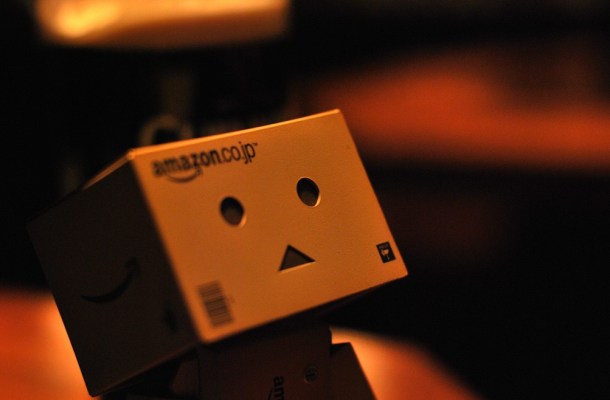Amazon is in the process of developing two smartphones, one inexpensive model and one with a 3D eye-tracking interface, TechCrunch has learned. The details are somewhat sparse, but are corroborated by sources and reports from earlier this year.
Amazon is planning two devices, the first of which is the previously rumored ‘expensive’ version with a 3D user interface, eye tracking and more. Both devices were under the ‘Project B’ moniker before the news was leaked on WSJ earlier this year. The expensive model’s code-name has since been changed to ‘Duke’ and now ‘Smith’ — and a release is not planned this year.
Details of the devices appeared on a HN posting via a throwaway account earlier today and TechCrunch verified some aspects of the posting with our sources and came away with some additional information.
They match up with details from the WSJ report:
But the people familiar with the plans said the smartphone and set-top box are just two elements of a broader foray into hardware that also includes the audiostreaming device and the high-end smartphone with the 3-D screen.
Inside Amazon’s Lab126 facility in Cupertino, Calif., where each of the devices have been under development, the efforts are known as Project A, B, C and D, or collectively the Alphabet Projects, said the people familiar with the plans.
The ‘Smith’ project includes a device that sounds like a bit of a hardware beast. The screen itself is not 3D but the device features four cameras, one at each corner of the device that will be used to track eye and head motions in order to move the interface around to ‘give the impression’ of 3D. Instead of using the phone’s internal sensors, like Apple does with iOS 7, it would base the movements off of the user’s point of view. Theoretically, this will provide a more accurate 3D representation of the screen’s contents.
There has been some software testing on a feature that will recognize the user’s face and ignore other faces around it, so as not to project 3D perspectives that are proper for your neighbors, but not for you.
Another feature said to be planned for the device, but not yet locked for release, is an image recognition feature that lets users take a shot of any real-world object and match it to an Amazon product for purchase. The possibility of this object recognition model offsetting some of the cost of the device through purchases by users is mentioned in the posting.
Four cameras (5 including a rear camera for shooting images) would be a large additional expense, so it’s tough to imagine that making it to market, and it’s not needed for motion tracking. But it could be necessary for the object capture mode, and Amazon could be looking for a differentiating feature that sets its devices apart from the crowd.
It’s not clear what OS this device runs on but it’s hard to believe it’s anything but a heavily modified version of Android that supports the 3D views. What we’re hearing is that if you move your head you can see things like media player buttons that move around and can even ‘peek’ off the edges of the screen to see things not visible from the front. Much of this is said to be experimental and the effects may not be as pronounced in the final version.
A second project which fell under the ‘Project B’ handle is a value device. Said to be a ‘cheap’ phone with basic software that is similar to that found on the Kindle Fire tablets — now called FireOS. The posting says that Amazon is looking to release the inexpensive device this year, something that would dovetail with a report by ‘Jessica Lessin’ writer Amir Efrati from last month. Note that Amazon denied to Efrati that it would release a device at all this year and that if it did the device wouldn’t be free. Our sources indicate that this may be because the project’s target date has been shifting around and it may get pushed into next year. There is no word on whether Amazon would try to offer the ‘cheap’ device low-cost via ads.
The devices are being shipped around internally inside a locked metal case with just the screen visible, and are not allowed outside of the building, even for engineers working from home. The floors of Amazon’s Lab126 facility where the devices are under development are locked down. This has become standard operating procedure for secretive companies like Amazon and Apple when it comes to hardware development. The development teams for the devices are split between Sunnyvale and Seattle.
There is also some scuttlebutt around staffing in the posting, some of which we hear is accurate. Amazon has indeed pulled engineers from other projects onto the phone teams, leaving other hardware projects with reduced staff.
The posting also claims that Amazon wanted to have launched the device already, but had issues with software and hardware, as well as employee retention. We’ve been unable to corroborate this aspect of the leak.
Since these devices are still classified as in development, it is quite possible that the feature-sets may change — even dramatically — before they are released to the public. If there has been a struggle developing the devices, then Amazon could consider modifying its requirements for bringing them to market. We have reached out for comment on this story and will update the piece if we hear back.
Image Credit: Puamelia / Flickr CC
